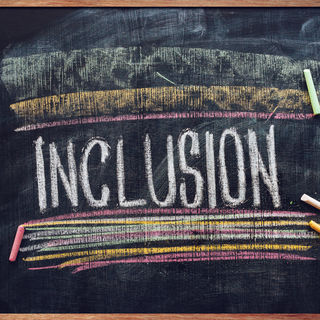Illusions of Inclusion in Special Education for Autism
Educational inclusion needs to be treated like a method, not a civil right.

Of special concern here is the popular use of educational inclusion—placing pupils with autism in general education classes. While Americans embrace all sorts of inclusion, desegregation, gender equality, and the need for public access for the physically disabled—arguably, educational inclusion of many children with autism is not cut from the same civil rights “cloth.” Many children with autism have more behavior incompatible with instruction, and so many master educational content more slowly, and often only with the use of special methods not included in the training of general education teachers.
When pupils with Individual Education Plans (IEPs) for autism receive an inclusive education, they are often substantially deprived of the benefit of credentialed special education teachers and of a classroom milieu with special education supports naturally embedded in it. Instead, the use of 1:1 paraprofessional aides for fully included pupils with autism, a commonly requested accommodation available through the Individuals with Disabilities Education Act (IDEA), can essentially relegate the included pupil to a second-class special education from a very minimally trained paraprofessional—while the general education teacher understandably applies her expertise to focus on the typically 25 or 30 other pupils in her class who don’t have IEPs or a 1:1 aide.
Much inclusive education takes place in chronological age/grade level classrooms, but many included pupils with autism are not as close to academic grade levels as their general education peers. Simply put, a 10-year-old with autism who adds, but cannot yet follow addition “word problems” will not get much from fifth-grade math core curriculum which focuses on pre-algebra equations using all four basic numeric operations. That special education pupil must learn all the math “in between” first—and his paraprofessional aide seldom has the expertise to teach it to him, and such expertise is not in her job description. Even if a 1:1 aide happens to be competent at teaching subtraction, such 1:1 teaching then isolates the pupil with autism from classmates doing pre-algebra at the same time. If you can picture this, you can picture how inclusion in general education deprives many autistic children with IEPs from accessing the social world of classmates as well as special education methods that have been shown to be beneficial.
At the same time, research shows that disruptive special education pupils placed inclusively have been associated with negative “spillover effects” for the general education pupils in their classes: These general education pupils are at risk for higher rates of absenteeism, lower reading and math scores, accruing as their general education teachers work with pupils with IEPs, and spend more time overall dealing with behavior management, restarting and repeating instruction, going more slowly, and having less time for instruction overall.
What should be done instead that might more comprehensively and cost-effectively benefit both special and general education pupils? First is using inclusive placement only when a special education pupil is developmentally in reach of what the teacher is teaching classmates so that the pupil can access and benefit from the expertise his general education teacher has, rather than having to depend on a paraprofessional aide to learn. Second is to address socialization goals for pupils with autism outside of instructional time—during lunchtime, recess, after care, organized sports and clubs, playground and neighborhood time—not when doing so may end up depriving both special education and general education pupils of the education all parents hope their children can receive.
References
- www.edweek.org/ew/section/multimedia/chart-us-special-education-enrollment.html
- www.NEA.org/home/19029.htm
- https://www.edweek.org/ew/articles/2016/09/07/studies-flag-potential-downside-to-inclusion.html



